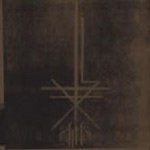It takes a monumental amount of tolerance and fortitude to appreciate an album like KTL’s sophomore release, KTL 2. This second collaboration between Austrian sound designer Peter Rehberg and doom/sludge mainstay Stephen O’Malley again proves the duo to be reliable and inventive purveyors of monolithic drones and uniquely forbidding sonic tapestries. In keeping with what O’Malley describes as his DABM (Digital Analogue Black Metal) manifesto, his compositions with Rehberg as KTL serve as a sort of black metal derivative whereby elements of black metal (notably, atmosphere, tempo, tone, and melody) are synthesized and drawn out to form a foundation for these four lengthy drone-based pieces. The recording, in toto, clocks in at over 70 minutes.
The album’s opener, “Game,” focuses on the ambient properties of black metal. At just over 10 minutes in length, the track is the album’s shortest piece, but it is also its most evocative and atmospheric. One of the characteristics of black metal, typically, is to create a sense of foreboding or sorrow in the form of generally keyboard-driven soundscapes that act as a backdrop for the music’s more assertive metal component. In its original incarnation, black metal was designed to evoke frigid Nordic landscapes, dark forests, and other locales generally redolent of a sepulchral sense of gloom. “Game,” accordingly, is an intensely nightmarish black ambient piece utilizing O’Malley’s guitar feedback to further underscore its deeply sinister undertones.
As classic black metal, as a rule, features breakneck tempos and ferocious blast beats to emphasize its aggressive nature, KTL employ a similar device on “Theme,” the album’s second track. Much in the same manner that Kevin Drumm created an uptempo black metal-inspired cacophony of hyper-distorted, digitally manipulated prepared guitar squall on his noise classic Sheer Hellish Miasma (also released on Rehberg’s Mego label), O’Malley and Rehberg use what sounds like sped-up tape loops, bass drums, and near-unrecognizably tweaked string samples to generate a dense, repetitive track (which is incidentally the album’s longest) that places an emphasis on speed and violence. The piece, like much of Drumm’s similarly difficult recordings, seems consciously designed to try the patience of even the most jaded noise aficionado.
“Abattoir” is the most patently guitar-driven track on the album and features the malevolent, buzzing wall-of-sound guitar tone that comes right out of the black metal rulebook. The piece, while basically consisting of a single guitar chord played in minor variations throughout, is perhaps the record’s most intriguing, as it forces the listener to focus on and follow the trajectory of its gently, incrementally shifting textures. Though it is considerably more low-key than the album’s preceding track, “Abattoir” nonetheless seethes with latent aggression that culminates in a compelling series of blackened undulations. O’Malley’s caterwauling guitar is complemented by Rehberg’s low-end electronic patterns that contribute greatly to the tension on this piece.
Closing with the haunting “Snow 2,” KTL 2 ends on a relatively serene, even uplifting, note. Shards of dissonant, delayed guitar chords recur and then decay into infinity like a distant fog horn or possibly a space-borne distress signal repeating at intervals. The track’s heavily reverbed oscillations ultimately give way to melodic, Morricone-esque, clean-toned guitar figures that are reminiscent of Dylan Carlson’s work on his brilliant Hex: Or Printing in the Infernal Method. O’Malley’s filigree arpeggios, situated as they are amidst the gauzy brume of Rehberg’s atmospherics, stand in stark, jarring contrast to the rest of the album, and act as something of a euphoric coda to an ambitious, albeit challenging, record.
More about: KTL


